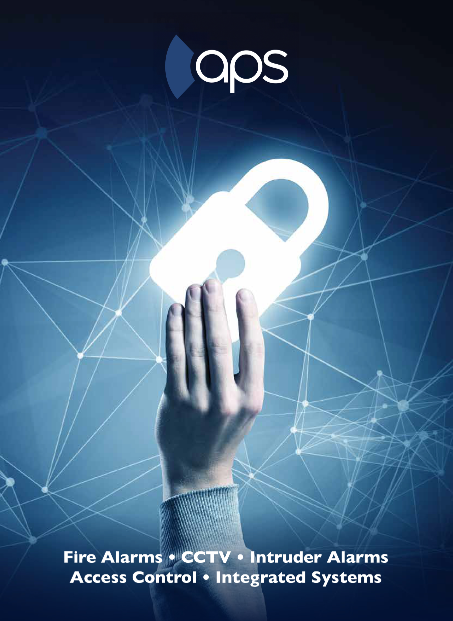Enhancing Security with Access Control and Key Holder Registers
by Eleasha Hylton-Rowe |
June 10, 2024
In today’s security landscape, maintaining robust security measures is not just an option; it’s a necessity. Organisations of all sizes face increasing threats to their physical and digital assets, making effective access control systems and key holder registers vital components of a comprehensive security strategy. At APS, we specialise in providing top-notch security solutions that help you safeguard your assets and ensure peace of mind.
What is Access Control?
Access control is a fundamental aspect of security management, encompassing measures designed to regulate who or what can view or use resources within an environment. It plays a crucial role in both physical and digital security, ensuring that only authorised individuals can access specific resources or areas.
What Are The Different Types of Access Control?
- Physical Access Control:
- Locks and Keys: Traditional method of restricting entry to physical spaces.
- Electronic Access Control Systems (EACS): Use key cards, biometric scanners, and PIN codes to control entry.
- Security Personnel: Guards monitoring access points.
- Logical Access Control:
- Authentication: Verifying user identities through passwords, biometrics, or two-factor authentication.
- Authorisation: Granting or denying permissions based on user roles or attributes.
- Auditing and Monitoring: Tracking access to ensure compliance and detect anomalies.
What Are The Different Methods of Access Control?
- Discretionary Access Control (DAC): Resource owners have the discretion to grant access to others.
- Mandatory Access Control (MAC): Central authority enforces access policies, commonly used in government environments.
- Role-Based Access Control (RBAC): Permissions are based on user roles within an organisation, simplifying management.
- Attribute-Based Access Control (ABAC): Uses various attributes to determine access rights, offering a flexible approach.
APS are proud to be Platinum Partners with Paxton Access, a leading provider of innovative access control solutions. Paxton’s range of products, including the advanced Net2, Standalone and Paxton10 systems, offer unparalleled security and flexibility for businesses of all sizes. Our team at APS Security is highly skilled in installing and configuring Paxton’s state-of-the-art access control systems, ensuring seamless integration and optimal performance to enhance your security infrastructure.

The Role of Key Holder Registers
While access control systems manage electronic and digital access, key holder registers are critical for tracking physical keys. A key holder register is a record-keeping tool that details who has access to keys for various secure areas, ensuring accountability and enhancing security.
Key Details in a Key Holder Register:
- Key Identification Number: Unique identifier for each key.
- Key Holder Name: Individual in possession of the key.
- Date Issued: Date the key was issued.
- Contact Information: Key holder’s contact details.
- Department or Role: Key holder’s organisational role.
- Key Return Date: Date the key is returned, if applicable.
- Authorisation: Who authorised the key issuance.
Potential Security Breaches Due to Outdated Key Holder Registers
Failing to keep the key holder register up-to-date can lead to several security breaches:
- Unauthorised Access:
- Former Employees: Keys not retrieved from former employees pose a significant risk, as they might use them to gain unauthorised access.
- Lost or Stolen Keys: Without proper tracking, lost or stolen keys can be misused by unauthorised individuals.
- Lack of Accountability:
- Untracked Issuances: Inaccurate records make it challenging to track current key holders, complicating investigations and accountability during security incidents.
- No Record of Returns: Without tracking key returns, there’s no assurance that keys are returned, leading to potential unauthorised access.
- Increased Risk of Theft or Vandalism:
- Sensitive Areas: Uncontrolled access to sensitive areas can result in theft, vandalism, or tampering with essential equipment or information.
- Compromised Emergency Response:
- Inaccurate Information: Emergency responders rely on accurate key holder information for quick access to secure areas. Outdated registers delay response times, potentially exacerbating emergencies.
- Regulatory Non-Compliance:
- Audit Failures: Many industries require strict access control measures. An outdated key holder register can lead to failed audits, resulting in fines or other penalties.
- Operational Disruptions:
- Inaccessible Resources: Essential personnel might be unable to access necessary areas if key assignments are not properly tracked.
- Miscommunication: Confusion and miscommunication about access rights can arise from an outdated register.
- Data Breaches:
- Confidential Information: Unauthorised access to areas containing sensitive data can lead to data breaches, causing significant legal and financial repercussions.
- Safety Hazards:
- Restricted Areas: Unqualified individuals gaining access to restricted areas, such as mechanical rooms or hazardous material storage, can result in severe safety hazards.

Integrating Access Control with Key Holder Registers
Combining robust access control measures with regularly updated key holder registers creates a comprehensive security framework. Here’s how to effectively integrate the two:
- Regular Audits: Periodically review and update access permissions and key holder registers.
- Automated Systems: Utilise software that integrates access control with key tracking.
- Employee Training: Ensure employees understand the importance of security protocols.
- Incident Response Plans: Develop and implement plans for responding to security breaches.
We offer solutions that seamlessly integrate access control systems with key holder management, providing you with a fortified defence against security threats. Maintaining up-to-date access control systems and key holder registers is crucial for protecting your organisation’s assets and ensuring operational efficiency. By implementing these measures, you significantly reduce the risk of unauthorised access, theft, and other security breaches.
For more information on enhancing your security infrastructure, contact us. Our team of experts are dedicated to helping you achieve comprehensive security with cutting-edge solutions tailored to your needs.





